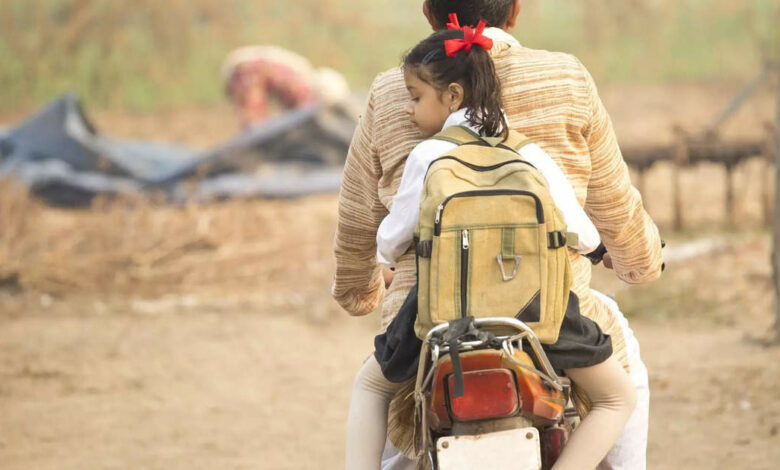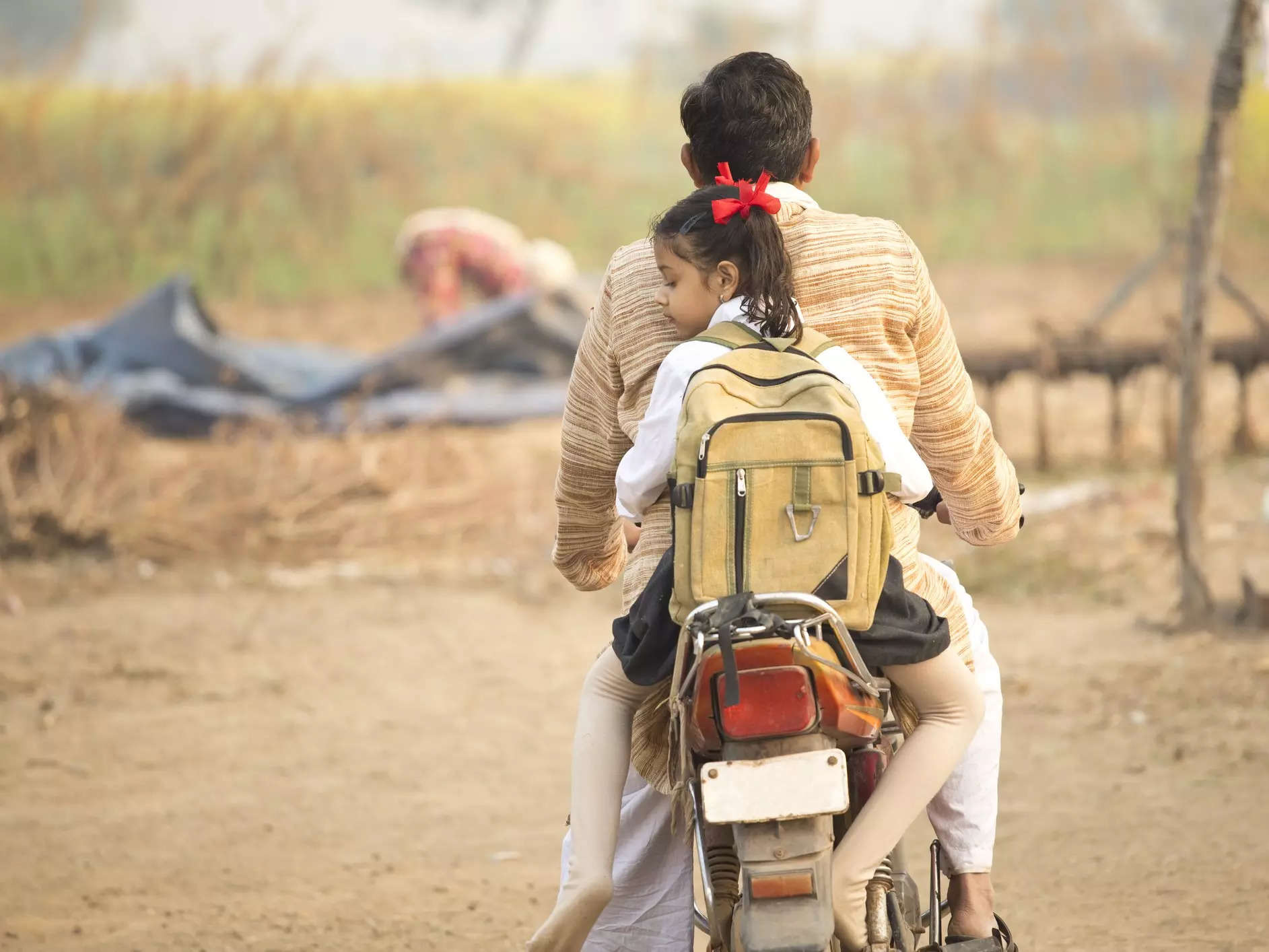Is rural India wheeling its way out of demand depression?

But an important indicator has revealed an uptick in rural demand. Motorcycle and scooter sales in India, a significant proxy for demand in rural areas, likely grew in double-digits in the financial year 2023-24, crossing pre-Covid levels, buoyed by sustained revival in demand in urban as well as rural markets.
Also Read: India’s motorcycle and scooter sales likely crossed pre-Covid levels in FY 23-24
Industry estimates show, ET has reported, domestic two-wheeler sales rose about 13% to 18.4-18.5 million units in FY24. Petrol-powered models comprised more than 95% of the total sales at about 17.5 million units. Rural India accounts for more than 50% of the overall two-wheeler sales. Two-wheeler makers from Hero MotoCorp to Honda Motorcycle & Scooter India (HMSI) and Bajaj Auto are seeing early signs of revival in demand for entry-level motorcycles which started with the festivals and sustained through the wedding season in northern parts of the country, especially in rural areas.
Vehicle registrations – a proxy for retail sales – increased in healthy double-digits by 13% Y-o-Y to over two million units in February amid better supplies and sustained consumer demand across rural and urban markets, as per data collated by FADA (Federation of Automobile Dealers Association).
FMCG industry sales, to which rural India contributes 35%, have also seen a small uptick recently. The Indian FMCG industry’s volume grew by 6.4 per cent year-on-year in the October-December quarter with an uptick in consumption that was seen both in urban and rural areas, according to a report by analytics firm NielsenIQ. The report also highlighted a narrowing consumption gap between urban and rural markets for the first time in 2023. Higher volume and a recovery in rural markets helped the FMCG industry log a 6 per cent growth in value terms, the report stated. Despite a sequential-quarter decline, the rural recovery narrative continued to evolve throughout the year. Nielsen tracks primarily branded retail sales.Moreover, the rural demand may not be as low as it may seem because improvements in physical infrastructure and connectivity have impacted rural demand and supply patterns, with rural spending getting captured in urban areas, as shown by SBI research. “A farmer can travel many kms easily to buy and sell things and these purchases will be counted in urban numbers (implying less numbers captured for rural and semi-urban areas) even though they are bought by primarily rural populace,” SBI researchers said in a recent report. The researchers noted that the phenomenal growth in income of self-help groups may also be a factor contributing to this shift, which has been helped by better banking linkages and access to credit.The gloom persists
However, two-wheeler sales is one positive indicator among the overall gloom that continues to hang over the rural economy even though most FMCG companies are hopeful of rural demand strengthening in this year.
Data from MGNREGS, the government’s rural jobs scheme which indicates the health of the rural economy at the very bottom, shows more villagers had to fall back on MGNREGS work in 2023 which shows distress in the rural economy. The scheme has generated 40 crore persondays of work more than the pre-pandemic (2019-20) level – suggesting a continuing rural distress. As 2023-24 completes, the flagship distress labour scheme clocked 305.2 crore persondays on March 31, TOI has reported. In 2022-23, 293.7 crore persondays were generated – roughly 12 crore persondays more. The last two years – 2022-23 and 2023-24 – indicate that employment for the unskilled poor has not returned to the pre-pandemic year 2019-20, when the work generated was 265.3 persondays.
As per estimates by research firm Kantar, which monitors branded as well as unorganised products, including unpackaged voluminous commodities, slow agriculture growth will keep pressure on FMCG sales. The persistence of El Nino conditions till the first half of 2024 and its impact on crop yields is expected to weigh on the growth of FMCG sector, which is struggling with a slump in consumption. “Agricultural growth is projected to be at 1.8% in 2023-24. This is a seven-year low. According to the first estimates of kharif crops released, almost all crops have seen lower yields due to uneven rainfall. This is likely to impact the first half of 2024,” said K Ramakrishnan, MD (south Asia) at Kantar Worldpanel.
What lies ahead
While the growth in two-wheeler sales definitely points at an uptick in rural demand, villages need more to exhibit a large demand revival. Many companies have hopes on election spending which have a multiplier effect on the rural economy but that may not be enough while the most important factor remains the rains. In the general elections, a spending of about ₹1 lakh crore is expected, as per an ET estimate
Executives in passenger vehicles and two-wheelers segments have told ET that broader economic growth will give further impetus to sales. A sustained focus on capex as well as welfare measures by the government will help a steady recovery in rural demand. Last year, the government extended its free food grain scheme for five years and recently provided further relief in LPG prices. Paras Jasrai, senior analyst, India Ratings and Research, has told ET that more can be done by rationalising GST rates and increasing allocations to PM-Kisan minimum income support scheme for farmers and other rural schemes, including wages under the MGNREGS.
Economists said a normal monsoon and lower rural inflation will also be pivotal to rural demand recovery getting broad-based. “In FY25, we expect rural demand to be supported by better monsoon,” said Gaura Sengupta, economist, IDFC First Bank.
With supporting factors such as high overall growth and low inflation, rural demand can grow steadily, Rajani Sinha, Chief Economist, CareEdge Group, has told ET Now recently. “If you look at some of the indicators that we are seeing from the rural economy, like two-wheeler or tractor sales, while tractor sales still remain weak, we are seeing some improvement in two-wheeler sales. We are seeing some improvement even in terms of consumer non-durables whereas the FMCG companies are still highlighting that rural demand remains weak,” she said. “We are hopeful that going forward, if overall growth remains high, and if the employment situation improves in rural areas, we could see some convergence of growth because over a longer period of time, medium term, the inflation trend is expected to go down. If inflation goes down, and specifically if food inflation continues to go down, there could be some respite for rural demand. Hence, we could expect some convergence of rural and urban demand.”
Source link





